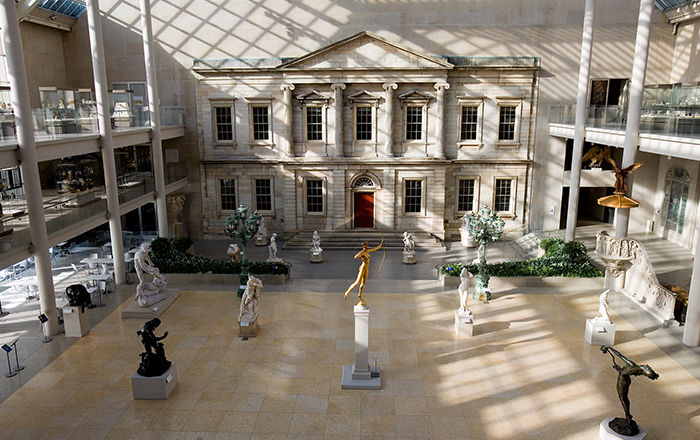Torre dei Schiavi
Jasper Francis Cropsey American
Not on view
Best known for his Hudson River scenes depicting changing seasons, Cropsey also produced sketches of the Roman Campagna during his 1847-49 study sojourn in Italy. A longtime favorite subject of artists, the Campagna, with its variety of Roman ruins adding visual and historical interest to the vast valley, inspired both real and imaginary views. The so-called Torre dei Schiavi (“Tower of Slaves”) was one of the most famous ruins in the area. Originally a mausoleum belonging to a third century A.D. imperial villa complex, it fell into disrepair and ruin over the centuries. By the mid-1800s, the site had become a popular gathering location for May Day festivities celebrated by largely German artists in Rome. It is believed that Cropsey may have attended one such event, in 1848, as he was friendly with many in the international community of painters and sculptors.
This oil is the first that Cropsey painted of the atmospheric Campagna site, shortly after his arrival in Rome. It was one of six paintings the artist sent, in February 1848, to New York City for exhibition. There, it was awarded by the American Art-Union—an art subscription organization—as a prize to member Joseph Dart Jr., of Buffalo, New York. The Met owns a related, later drawing by Cropsey of the same subject, Torre dei Schiavi, the Roman Campagna (1970.9.26 recto).
